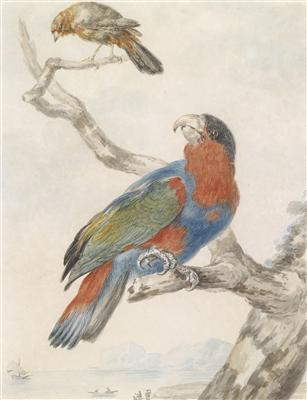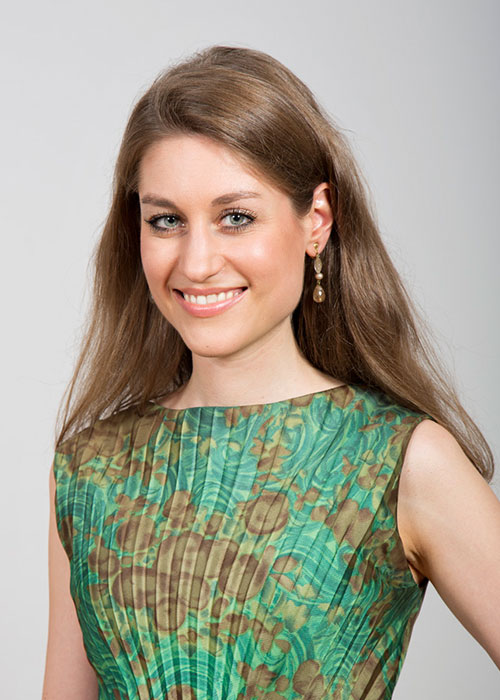Abraham Meertens

(Middlebourg 1757–1823) A parrot and a flycatcher on a branch against a coastal landscape, watercolor, pen and black ink, on paper, 32 x 23 cm, mounted, framed, (Sch)
Abraham Meertens was born in Middlebourg in 1757. He was a significant representative of the revival of Flemish painting tradition in the 18th century. In 1770 Meertens entered the St.-Lucas guild and was a co-founder of the Academy. Landscapes, still-lives, animal- and bird studies constitute the majority of his work. Meertens oriented himself towards an earlier generation of the 17th century such as Frans Snyders, Jan Fyt, Paulus Potter and Philips Wouverman.
In the present sheet Meertens depicted the particular species of a flycatcher (Pyrocephalus rubinus), which had its habitat in Central and South America. At the lower margin one can see a parrot, whose combined features of a macaw, a parrot and a cacadoo existed only in the imagination of the artist. The mixture of scientific natural description and surreal imagination are characteristic for animal- and plant studies of the 18th century. They were not only widespread among researchers on natural history but pleased art collectors as well. The type of half scientific, half phantastic natural description can be traced back to early Italian painting; e.g. to Raffael’s workshop and to Giovanni da Udine. In the 18th century the scientific aspect of nature description became more important due to the rising influence of enlightenment.
Esperta: Mag. Astrid-Christina Schierz
 Mag. Astrid-Christina Schierz
Mag. Astrid-Christina Schierz
+43-1-515 60-546
astrid.schierz@dorotheum.at
08.11.2012 - 16:00
- Stima:
-
EUR 5.000,- a EUR 7.000,-
Abraham Meertens
(Middlebourg 1757–1823) A parrot and a flycatcher on a branch against a coastal landscape, watercolor, pen and black ink, on paper, 32 x 23 cm, mounted, framed, (Sch)
Abraham Meertens was born in Middlebourg in 1757. He was a significant representative of the revival of Flemish painting tradition in the 18th century. In 1770 Meertens entered the St.-Lucas guild and was a co-founder of the Academy. Landscapes, still-lives, animal- and bird studies constitute the majority of his work. Meertens oriented himself towards an earlier generation of the 17th century such as Frans Snyders, Jan Fyt, Paulus Potter and Philips Wouverman.
In the present sheet Meertens depicted the particular species of a flycatcher (Pyrocephalus rubinus), which had its habitat in Central and South America. At the lower margin one can see a parrot, whose combined features of a macaw, a parrot and a cacadoo existed only in the imagination of the artist. The mixture of scientific natural description and surreal imagination are characteristic for animal- and plant studies of the 18th century. They were not only widespread among researchers on natural history but pleased art collectors as well. The type of half scientific, half phantastic natural description can be traced back to early Italian painting; e.g. to Raffael’s workshop and to Giovanni da Udine. In the 18th century the scientific aspect of nature description became more important due to the rising influence of enlightenment.
Esperta: Mag. Astrid-Christina Schierz
 Mag. Astrid-Christina Schierz
Mag. Astrid-Christina Schierz
+43-1-515 60-546
astrid.schierz@dorotheum.at
|
Hotline dell'acquirente
lun-ven: 10.00 - 17.00
kundendienst@dorotheum.at +43 1 515 60 200 |
| Asta: | Disegni e stampe fino al 1900, acquarelli e miniature |
| Tipo d'asta: | Asta in sala |
| Data: | 08.11.2012 - 16:00 |
| Luogo dell'asta: | Wien | Palais Dorotheum |
| Esposizione: | 02.11. - 08.11.2012 |
